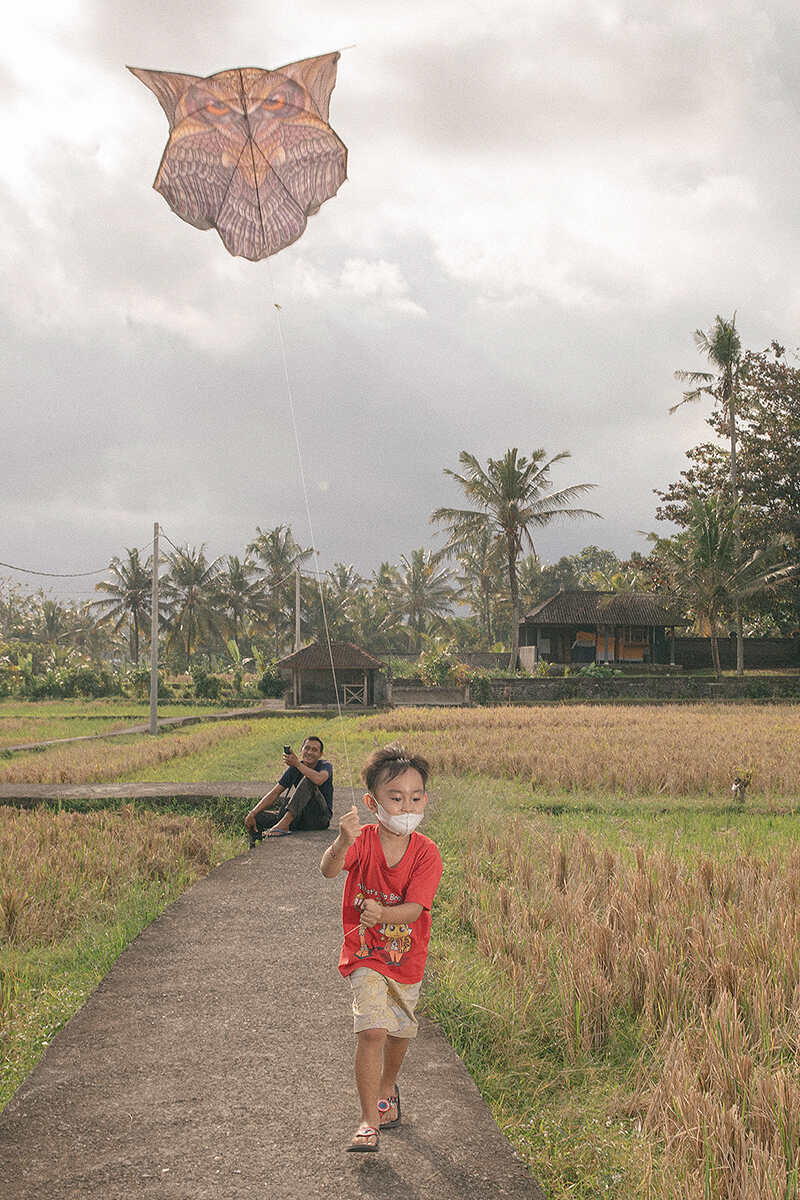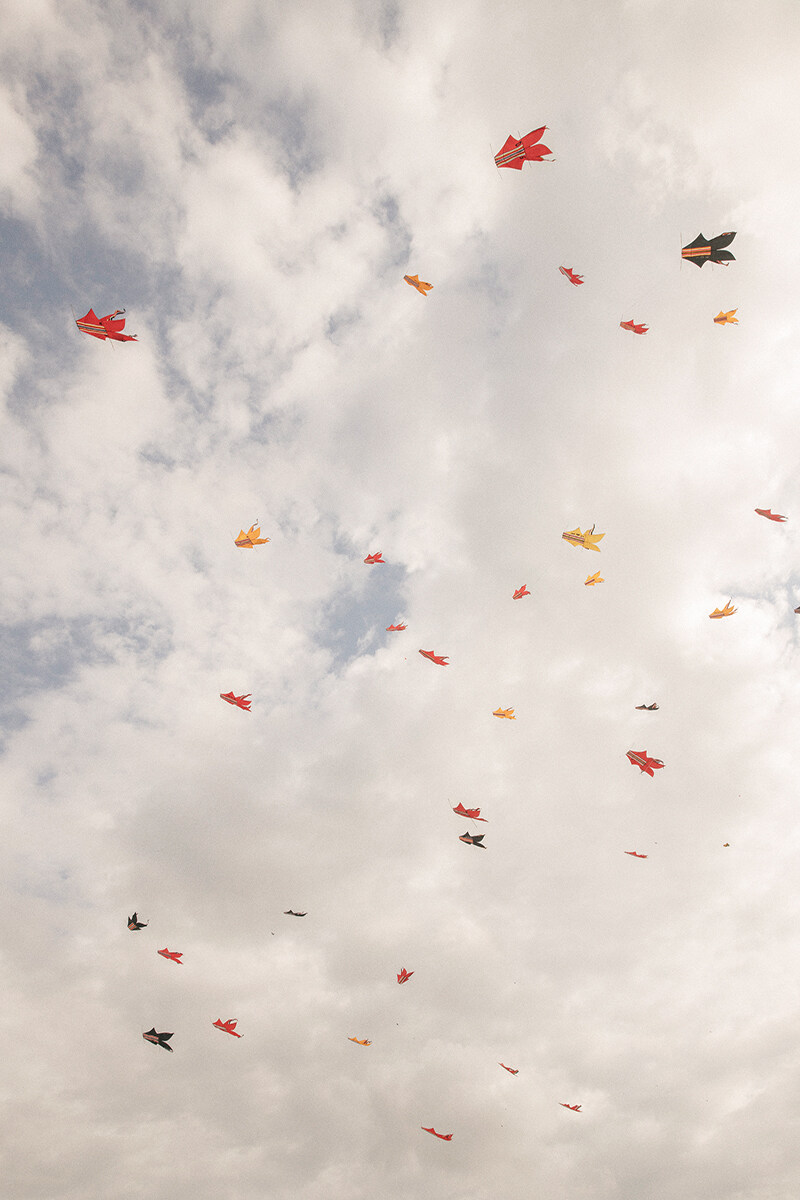
Photographer Putu Sayoga documents the traditional activity of kite flying in Bali during the June – August dry season
For the people of the Indonesian island of Bali, especially the men and boys, June to August is kite-flying season. At this time of year – the middle of the dry season – the winds shift direction and increase in strength, and the skies above Bali fill up with colourful kites of all shapes and sizes dancing on the breeze.











